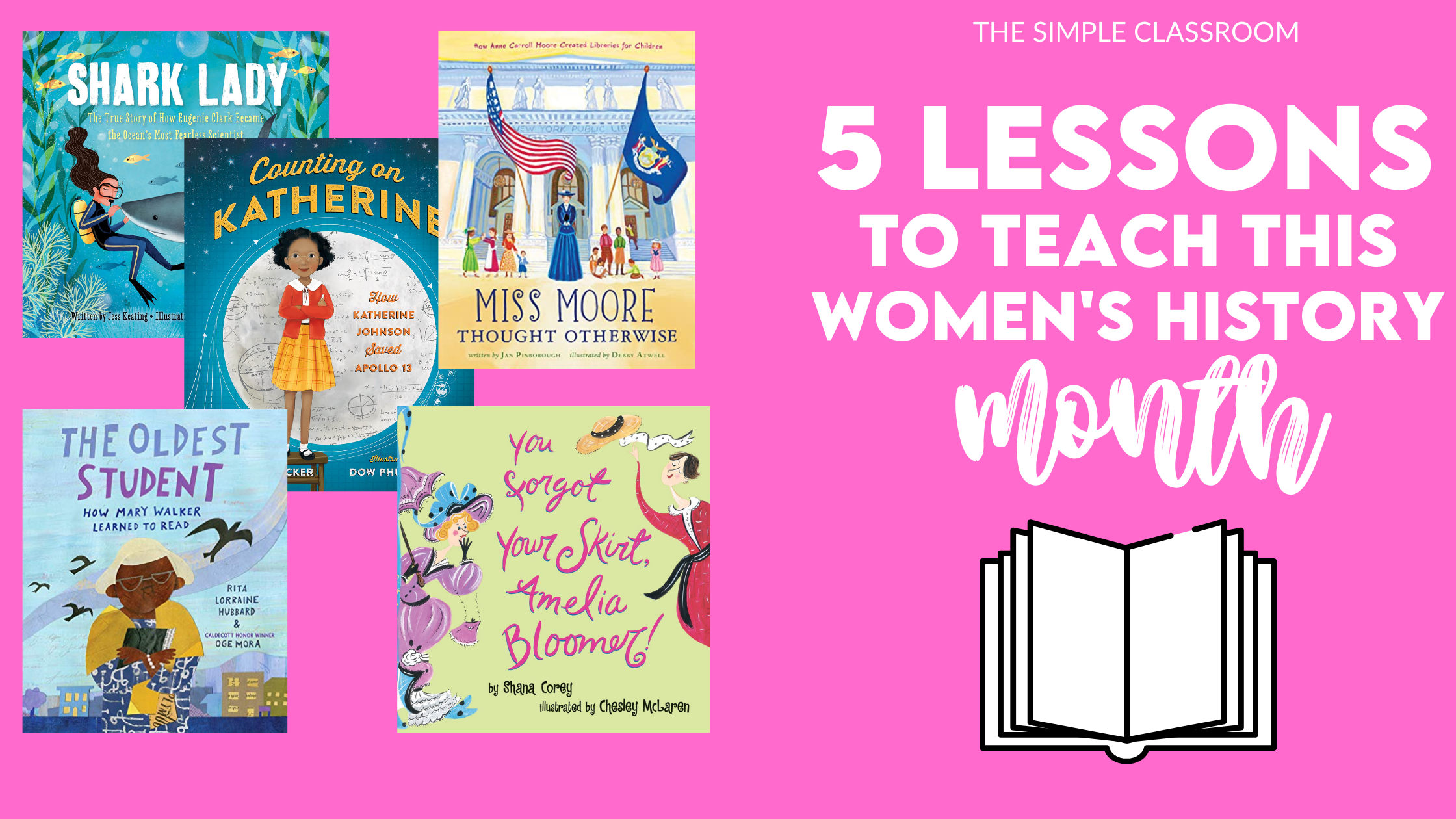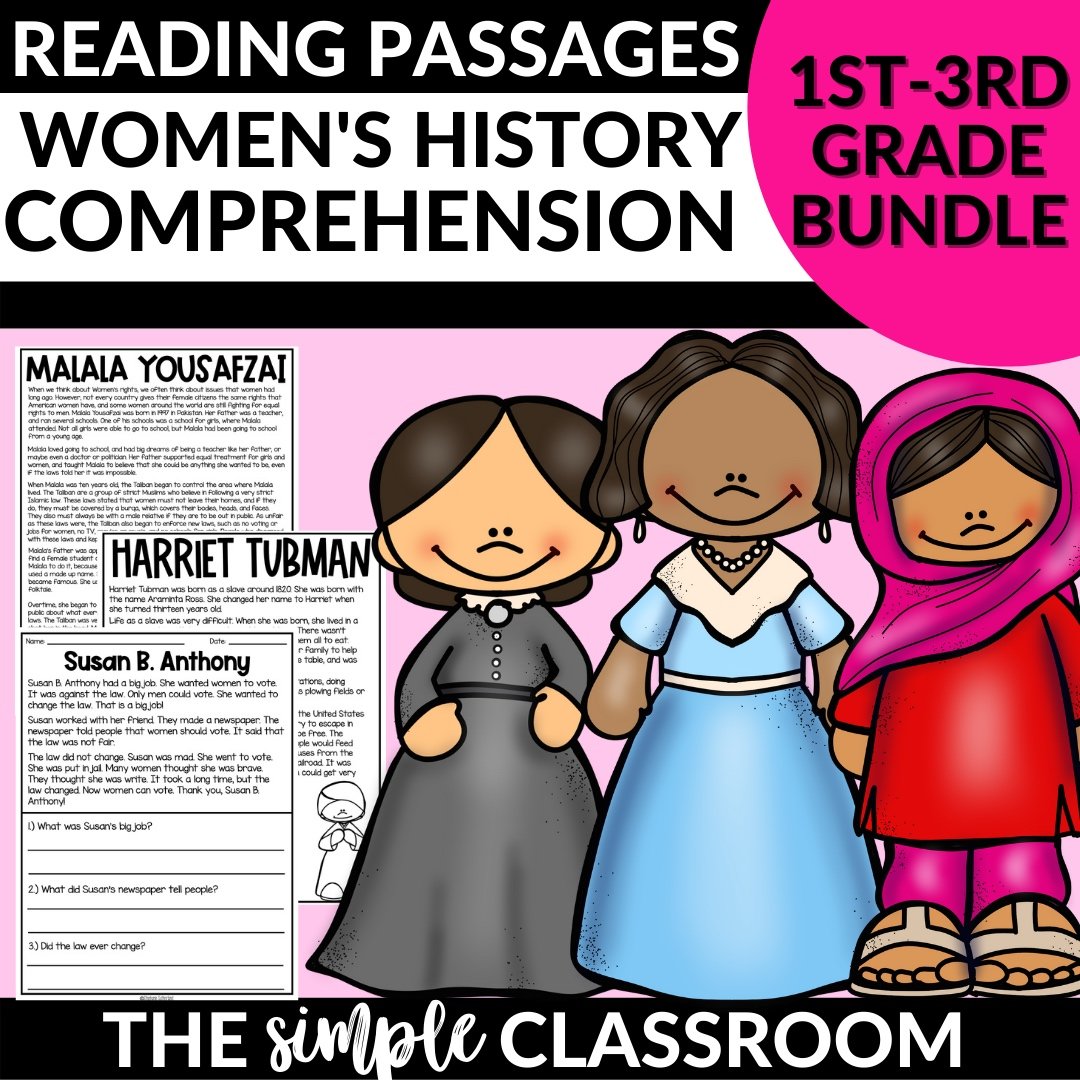Women's History Reading Lessons to Try this March
International Women’s Day is a big deal in my classroom. I have a whole collection of picture books that I save for Women’s History Month, and I begin introducing them the week of International Women’s Day. It’s so inspiring for our students, both boys and girls, to hear these stories where women overcame so much adversity to change things for the better.
My favorite is when I introduce the kids to someone whose story they don’t already know. Anne Carrol Moore, Amelia Bloomer, Eugenie Clark…these women are not in our textbooks, so it’s fun to share them with my students! Today, I have 5 Women’s History Read Alouds that you can share with your students this month. I am also sharing my favorite mini-lessons to go with each book!
Note: This post contains affiliate links. If you choose to purchase a product through the links in this post, I may make a small commission, at no extra cost to you. :)
What It’s About: Miss Moore Thought Otherwise tells the story of how Anne Carroll Moore fought for children to have the right to enter libraries, and have books for themselves free to read!
Mini-Lesson Idea: This is the perfect book for examining cause and effect. What caused Miss Moore to add children’s sections to libraries? What effect did that have on libraries around the country? Do a close read of this story just to understand the basic points of the plot. Then, give students a cause and effect graphic organizer and ask them to listen to the story again. This time, they must write cause and effect relationships that they hear in the story. Review at the end on an anchor chart to see how many your class could find!
What It’s About: Amelia Bloomer is the founder of…you guessed it, the bloomers! These were the first version of pants for women, and the kids love reading this fascinating story of how women’s clothing evolved to be more equitable.
Mini-Lesson Idea: Comparing and contrasting is a great skill to review with this book! Read the story to your students, and notice how girls clothing changed over time. After the book, have students complete a Venn diagram about girls’ clothes before Amelia Bloomer, and girls’ clothes today. After filling in the diagram, have students turn their thinking into a complete paragraph.
What It’s About: Shark Lady tells the story of how Eugenie Clark came to love ocean life, and how her courage took her further than many others in her field. Plus, it teaches a lot of cool facts about sharks!
Mini-Lesson Idea: Shark Lady is a great story for text-to-self/world/text connections. Have students make connections on sticky notes as you are reading. They can be connections to other stories they have heard, connections to things they have worked hard for in their own lives, or things they have heard about in the world. Make a college of connections on an anchor chart and share + discuss.
What It’s About: Katherine Johnson is such a fascinating woman from history! This sweet story takes us through her childhood, and how her affinity for math and science was an important part of who she was as a little girl.
Mini-Lesson Idea: The best skill to pull from this book is character traits! Use a character trait graphic organizer and project the book on a document camera. Let students look through the pages with you to find character traits, and be sure to get them to share the exact text evidence from the book that supports it! Have them jot down the character traits and the page numbers on the graphic organizer.
What It’s About: Mary Walker was born into slavery. It was illegal for slaves to learn to read. When Mary Walker is 116 years old, she decides she wants to learn how to read. And she does! This is a moving story about perseverance and achieving your goals, no matter how hard it seems.
Mini-Lesson Idea: This is a great story for reviewing sequence of events. Read the story once, then groups of 4-5 students a string and several sheets of paper. Read the story one more time, but this time have students take notes about the events in Mary Walker’s life. Have students create a timeline of the book. They can fold the pieces of paper in half and hang them on the string, with events from the story in order.
What about small groups?
Do you want to keep the women’s history goodness going in your small group time all month long? Check out my differentiated sets of women’s history reading passages for 1st-3rd grade level readers! Or, grab the bundle for 20% off!










